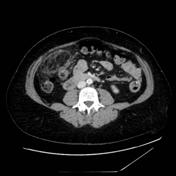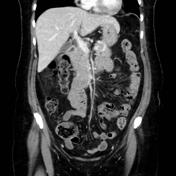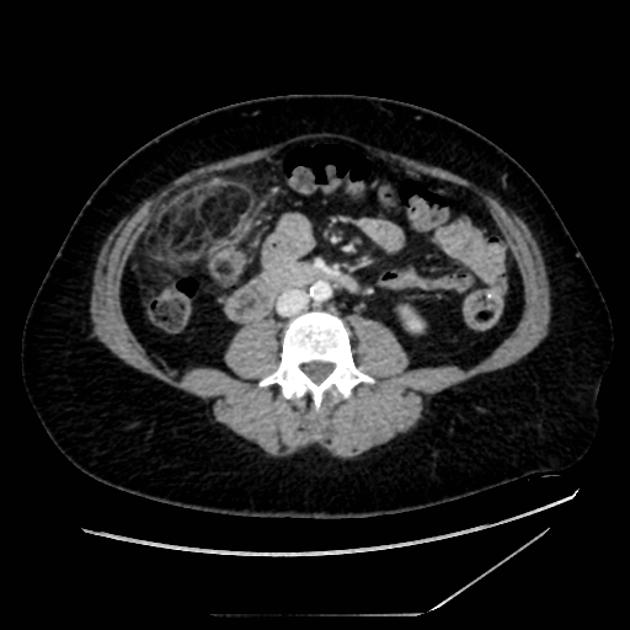Presentation
Patient presented with continuous pain in the right flank progressively getting worse since three days. No nausea, vomiting or fever. History of partial nephrectomy on the right side 5 years ago.
Patient Data





Contrast-enhanced CT shows an extensive round shaped infiltration of the antimesenteric side of the right transverse colon without colonic wall thickening. The size and right-sided location make it much more likely to be a mesenteric infarction rather than epiploic appendagitis, although both are possible.
This is the cause of the patient's right hypochondria - right flank pain, rather than a renal stone.
Case Discussion
Ultrasound performed to rule out right kidney problems (hydronephrosis) showed no abnormalities. CT scan with contrast was performed to rule out ureteric stones.
Although sometimes the infiltration of the pericolic fat can be seen on ultrasound, it was not seen in this patient mostly because the clinicians focused their questioning on ureter stones.




 Unable to process the form. Check for errors and try again.
Unable to process the form. Check for errors and try again.